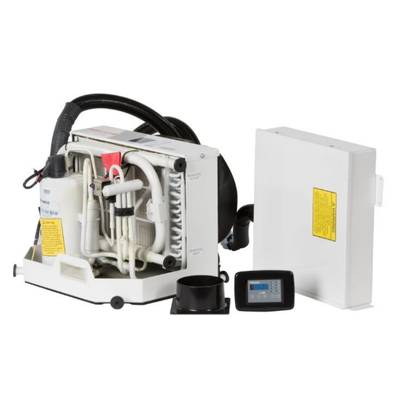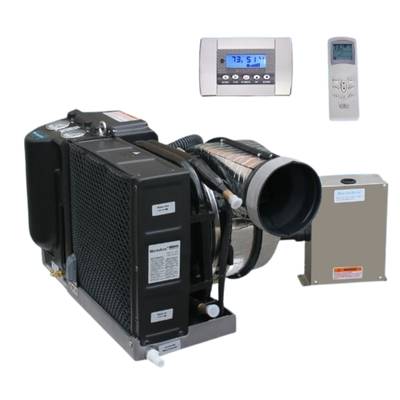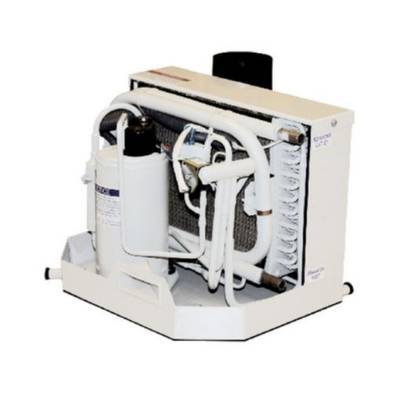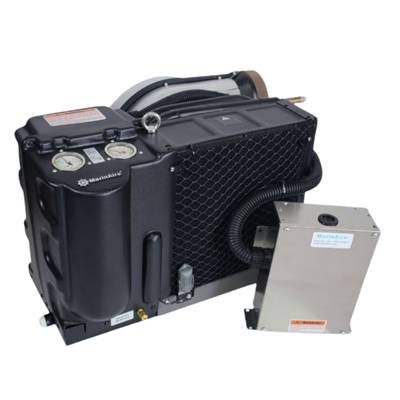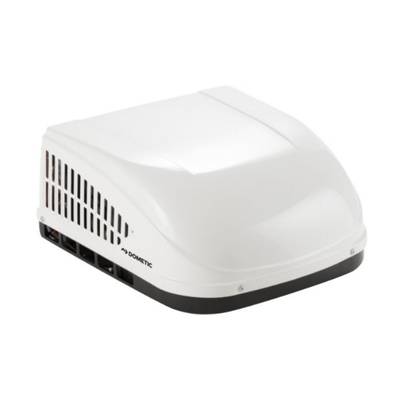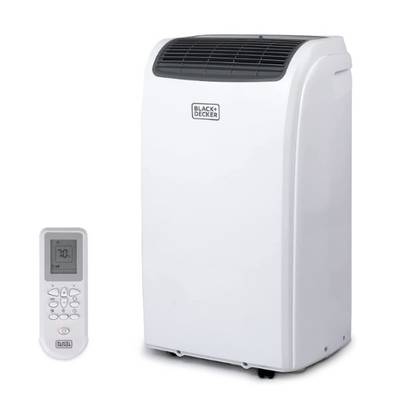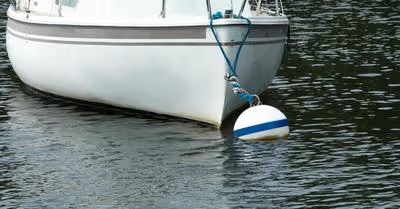Table of Contents
7 Best Sailboat Air Conditioners
For a sailboat air conditioner to be considered one of the best, it has to tackle changes in temperature without consuming too much power from your boat. Many of these options will provide comfort without hoarding all of your boat’s energy.
Webasto 5011396A
Webasto 5011396A
Over the last five years, the Webasto brand has put out some of the best sailboat air conditioners out there. This model in particular is essentially noise free, well designed, and fairly easy to install.
In addition, the price point might be worth a look if you are wanting to save money compared to some other brands. If you are wanting a comfortable night of sleep without a ton of noise, this might be the sailboat air conditioner for you.
Pros:
- Fairly quiet
- Easy to follow instructions to build
- Effective at cooling
- Around $1,300
- Quality materials
Cons:
- Build might not fit on certain boats
DOMETIC 207500316 EnviroComfort

DOMETIC 207500316 EnviroComfort
If you believe that you will have issues fitting a sailboat air conditioner onto your boat, this one offers some flexibility. Over the last decade, the Dometic EnviroComfort has been reliable across many sailboats.
This air conditioner is equipped with R-140A refrigerant, so it offers one of the more environmentally friendly emissions. With digital controls, cleanable filter, and a quality output of air, this one is hard to beat.
Pros:
- Quality performance
- Built to last
- Simple to install
- Around $1,850
- Energy efficient
Cons:
- Fairly noisy
- Blower does not rotate 360 degrees
- Components might not match when trying to fit
MarinAire MSBA16K2
MarinAire MSBA16K2
If you want a sailboat air conditioner that has all the bells and whistles, then look no further than what MarinAire provides. This self contained marine air conditioner offers one of the best amount of features compared to others on the market.
For boats that are mid-sized and have a larger cabin to cool, this one does a great job at cooling. It comes equipped with pressure gauges so that it remains working optimally instead of working harder to get the job done.
Setting it up is a breeze and it comes with the ability to rotate the blower 360 degrees. As with most of the air conditioners on the list, this one also has R-140A refrigerant to meet environmentally friendly needs.
Pros:
- Easy to install
- Great cooling for small to medium sized rooms
- Fairly quiet
- Built in pressure gauges for high performance
- Energy efficient
- Blower rotates 360 degrees
Cons:
- Some users have issues with synching remote
- Power cord is shorter compared to other units
- A little over $2,000
Webasto FCF0012000GS
Webasto FCF0012000GS
If you are looking for a sailboat air conditioner that can do a little bit of everything, then this Webasto model is the right one for you. For the money, you can get some of the best cooling efficiency compared to other brands out there.
Some sailors have used two of these models on larger yachts to help keep the entire living space as comfortable as possible. Since this is also pretty quiet, it makes for one of the better ones at night.
It also has a reverse heat feature, but you will likely not use it as much as you would think. Lastly, it offers a two year, full factory warranty which is great for the price you are paying. This arguably might be the best bang for your buck.
Pros:
- Retrofits in most locations
- Cools small to medium sized rooms
- Very low noise
- Consistent performance
Cons:
- Blower could be better
- Power cord is shorter compared to other units
- A little over $2,000
MarinAire 14000 BTU/H Self-Contained
MarinAire 14000 BTU/H Self-Contained
While this one is just a slight step below the 16,000 BTU one, you can still get all of the same high quality features. This means you can rely on the great output of cold air, 360 degree blower rotation, and an environmentally friendly unit.
The only main differences here are the price and the output of the unit compared to the 16,000 model. If you have a slightly smaller boat than 33 feet, then this might be the model for you.
Pros:
- Easy to install and compact size
- Quality cooling for small to medium sized rooms
- Decently quiet
- Built in pressure gauges for high performance
- Energy efficient
- Blower rotates 360 degrees
- Slightly cheaper than the 16,000 BTU model
Cons:
- Some users have issues with synching remote
- Power cord is shorter compared to other units
- A little over $2,000
Dometic Brisk II
Dometic Brisk II
Thinking outside the box for just a minute and you can give the Dometic Brisk II a shot. While this unit typically serves the purpose of RV owners, some sailors have implemented this model onto their sailboats.
When comparing sailing to full time RV travelers that face various conditions, you can see how this air conditioner is a quality model. It does not take up much space and can be installed on the roof of your boat if you have one.
Sailors will love how easy it is to install and how efficient it runs. You might need to be a little more hands on and install yourself, assuming you can make space on the top of your boat.
Pros:
- Easy to install and compact size
- Great cooling
- Quality materials
- Versatile among various conditions
- Around $1,000
Cons:
- Not designed for marine use, but many sailors have utilized
Black+Decker Portable
Black+Decker Portable
Another idea that sailors have utilized over the years is a portable air conditioner, like the one Black+Decker has. This model definitely has its pros and cons, but it gets the job done in a variety of situations.
If something were to happen to your current air conditioning unit, this is an excellent backup if you are stuck in a heat wave. The only issues are that it takes up space and it is quite loud.
It serves its purpose in cooling and as a dehumidifier. You also need to stay on top of things with routine cleaning, but it will prolong life tremendously.
Pros:
- Can be utilized as a main unit or secondary
- East to put together and set up
- Cools, but is also a dehumidifier
- Very cost effective, at around $400
Cons:
- Takes up space on ground
- Can be loud for some sailors
How Marine Air Conditioners Operate
To have a better understanding of the functionality of a marine air conditioner unit, you would need to know how refrigerant systems work within an approved marine unit.
Other than simply chilled water being pushed through the unit, there are three main components that work within an air conditioning unit. Those main components that help the air conditioner work are the evaporator compressor, and the condenser.
The process begins with the evaporator drawing in warm air from the room or wherever it is installed. Majority of the time, these evaporators are equipped with refrigerants to help cool the air once it is collected.
Once the air has been collected, it is the compressors job to circulate the air. This also helps maintain the flow of the refrigerant.
Finally, the condenser takes action to cool the airflow and ultimately take it back through the evaporator. Now the fan or other forms of getting air quickly into the room are responsible for distributing the flow.
Variations of Marine Air Conditioners
There are two styles of air conditioners, which are refrigerant based and ones that have an evaporative cooling system. The most common ones sailors use are the ones with refrigerants, but there are slightly different variations and how they operate.
Expansion System
These types of marine air conditioners can be either self-contained or split, which simply means that the three primary components are all housed in one unit or separate. They each have their pros and cons, but they are minimal in comparison.
Installation is much easier with these types of systems. They also happen to be the most cost effective units compared to others in the market.
Assuming that the user has properly ducted the unit, it can cool the entirety of a room or cabin on mid-sized boats with ease. If you have a merger boat, you could look into having two units to offer a peace of mind when it comes to making it a chilled environment.
The only drawbacks that customers typically complain about is the noise, while some enjoy the constant humming at night. This usually leads to consumers paying a little extra for the ones that are quieter.
Chilled Water
The chilled water system air conditioners need refrigerant to help cool the water. Once it is cooled, the chilled water is processed to air handlers to help cool the room.
This system is often considered one of the more versatile ones out there simply because it can be customized to fit a particular boat. Depending on the size of your boat and where you need it, there is usually one to fit your needs and you can make adjustments.
When you attempt to put this air conditioner in place, you just need the right amount of space to build your perfect cooling system. This is why many sailors use this type if they are tight on space or do not want to take up a lot of room. In addition, they also happen to be a very reliable system.
Split Gas
While these are mostly found on larger vessels, the split gas system utilizes a central condensing unit that connects to a handful of air handlers with copper wire. Since these are considered a little heavier duty and more accustomed to larger boats, you can expect to pay a little more.
The good news is that they do not make a lot of noise and do not take up a ton of space. But in order for larger boats to be cooked efficiently, these are essentially the only options.
Biggest Drawbacks and Benefits to a Marine Air Conditioner
Many boaters have gone back and forth on the idea of adding a marine air conditioning system to their boat. It makes sense to add one, especially since every home and most RV’s have one. So why not a boat?
The most obvious reason for installing an air conditioner is to find relief on hot days while fishing or enjoying time on the water. It can make a huge difference cooling off quickly with one versus not having one at all.
In comparison to window units or other types of systems, marine air conditioners are better at cooling or heating the space they are put in. This is because they fit precisely to your dimensions and do not allow heat or cooled air in or out. In addition, they are designed for these conditions, unlike other systems.
Unlike other air conditioning units, marine air conditioners typically have little maintenance if they are installed properly. As long as you take care of the filter and strainer, you can make it last longer.
The first drawback that every sailor will notice is the cost. Some units start around $1,000 for decent ones, while others begin to climb in the thousands. If you only use your boat occasionally, can you justify spending a few thousand dollars for cooler conditions?
Some units require quite a bit of energy to operate. If you purchase one that is not energy efficient, you could be hogging all of the power just to keep your boat cool.
With that being said, you would have to calculate how much power you can use and how much your batteries can handle. So if your boat does not have a lot of power to spare, you would need to set up more or find a unit that does not use much energy.
Another disadvantage of these units is the high amount of BTU’s. Instead of purchasing a small one for a small room, you are limited on your options.
While the units themselves are small in size, they put out quite a bit of power as might be overkill for the room. Furthermore, you might not find the exact one to fit your needs in between a mid-size or larger boat so you would need to buy two.
The best thing a consumer can do is to estimate how much cooling they need for the space they want it to be in. Make adjustments as needed and find what works best.
What to Look for in a Marine Air Conditioner
While some consumers have their buying guide ideal for certain things, it is important not to overlook key factors. These are important aspects when considering a marine air conditioner.
Efficiency of Unit
How efficient the unit is will be one of the most important factors when trying to decide on a unit. Things like cooling capacity and how much power it needs to operate will be key here.
For some units, it might make sense to invest in another battery to help power the unit. Keep in mind that you are spending more money than just the unit itself since you have to buy another battery.
This is why it is important to see the differences between units that have 16,000 BTUs and 8,000. Buying one you do not need will require more money to help power the unit, so this might be an unnecessary cost for you.
Size of Your Boat
When thinking about a marine air conditioner, you also need to consider the amount of space you are trying to cool. You should measure the exact cubic feet you are trying to cool, regardless of structure or other things in the way.
If the unit does not say so, you should contact the manufacturer for the specifications. It should say anyway on how large of a room it works best in, but it never hurts to read how it is designed to function.
You also have to consider if the unit will be stationary or easy to move. This could change where you locate the unit and how it best fits your situation. You should take note of whatever the manufacturer notes and how it applies.
Installation
If you are not handy with tools or thinking outside the box, you want the easiest setup possible when finding the right marine air conditioner. This also means the total cost and effort that it takes to make it happen.
For self-contained units, these are often as simple as plugging in the unit and letting it do its thing. In addition, you might need just a few extra parts to make it work.
For some units, you might have to do some wiring, plumbing, or a combination of the two. Some knowledge of this will be required or you will have to have someone install this for you, which will affect the cost.
Noise Level
Most people either love or hate noise at night when they are trying to sleep. If you want perfect silence, or a unit that does not make much noise, you will need to find one that fits that category.
If you do not mind the noise or enjoy having something like background noise while you sleep, there are units available that create some noticeable noises. For some people, they cannot stand the noise so they choose a unit that is quieter.
In that case, some units are designed so that they reduce vibrations and noise when they work. Certain brands might charge a little more for this added level of comfort, so be prepared to shell out a little more cash.
Maintaining Your Marine Air Conditioner
Most of all marine air conditioners require little maintenance to ensure they run for a long time. They are designed to be in harsh conditions and take some wear and tear, so do not be afraid to get your hands dirty once in a while.
If you really want to prolong the life of your unit, then you need to perform routine touch ups. Before tearing open your unit, check with your manual to see what they recommend first.
For most portable units, this means you typically have to clean vents. With self-contained units, they usually have air filters that you can remove so it is easy to maintain.
When cleaning, make sure that they are free from dust and buildup. So having a delicate brush or vacuum can do the trick.
You also need to check for the condition of the connections and that wires are not becoming worn. Check the plumbing system and make sure there are no leaks.
The drain hose needs to be checked for any clogs and the condenser coils need to be inspected for any build up. If the unit has a pressure gauge, you need to ensure that it is at the normal level it needs to be.
If you are able to take care of your unit properly, you will extend its life beyond what others might say. Making a habit to check these every so often will be key in your success in cooling your boat for years to come.
Recent Articles



